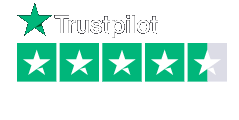In this blog I will be covering a range of strategies that you can implement in your business, to convert visitors from your website into marketing leads. But first, what is a marketing lead?
A marketing lead is someone who has engaged with your marketing. For example, they have signed up for your newsletter, follows or comments on your social media, reads a blog you’ve written or downloads a guide you are offering. At this stage they are putting their hands up and saying they are interested. That means there is a need or problem they want to solve and they are working out what their options are and the best way to solve it.
Call To Action (CTA)
If there is only one strategy you do, make it this one. Your call to action, for example on your website, is likely to be “get in touch”, “contact us now” or something similar. It’s where you are telling your visitors what to do next. Allow me a moment on my soapbox. On most websites you will find there is only one call to action “get in touch”. For 90% of your web visitors this call to action is too much too soon. They’re not ready to get in touch but it is the only option you have given them.
You need to offer a variety of options including softer, easier ones. This could be downloading a guide, following you on social media, signing up for your email marketing, or even reading this blog or case study. These options let visitors take that next step that isn't just “contact us now”. Every page and guide on your website must have some form of call to action on it.
Remember also to add CTA’s to your marketing materials.
Forms
In this instance I am talking about online forms where you enter your name, email address and phone number. Let me tell you, you would be amazed at what people will tell you in a form. You can ask questions in a form they would never answer if you were to ask them in person. I think it’s because we feel compelled to complete a form.
There are however 3 features you need to build in to your form in order for it to be a powerful and not pointless form. The first is that you need to keep your form simple and easy to complete. If it’s too long or the questions look too complicated they simply won’t complete it.
The second is that every question you ask must serve a purpose. Don’t ask questions that result in information you aren’t going to use in order to benefit your lead. The answers and information you gain from your form should enable you to learn something of value about them or their business. This should enable you to work out which ideal customer audience they are a part of, tailor your marketing to them and engage them more easily.
The third feature, and most important one, is that if you are going to ask them more than their name and email address you have to offer them information and value in exchange. It has to be information they value so highly they will be willing to tell you their information and take the time to complete the form. HubSpot is a great example of a company that is brilliant at this. The information they gather helps them to identify potential ideal customers and deliver relevant, highly valued content.
Asking them for their phone number? You need to make it clear not necessarily on the form but in the content on the page why you are asking for their phone number and what you will be contacting them about. This sets expectations and removes any suspicion that you are simply going to call them and sell at them.
Social media engagement
The job of your social media at this point it to try and engage with the people following you. You want to move them from idle followers to actively engaged followers with whom you can have a conversation. A great way to do this is to ask brilliant insightful questions that focus in on the challenges your audience are likely to have. We want to know more about their experience, the product or service they currently use, their perception of it, their goals and challenges.
With these questions you can start a conversation. That’s the primary objective here - to start a conversation. Once you start the conversation, you can share content you’ve produced including blogs, guides, e-books and so on to move them from being a visitor/follower to engaging with your marketing and content. This is your opportunity to educate them from there, while creating a great experience for them.
How many lead converting activities are you doing?
I’ve created this blog as a mental checklist so you can run through it to see how many of these lead converting activities you are doing. On the ones you are not currently doing, really challenge yourself as to why you are not doing them. Is there a good reason? What order of priority would you put these in for your business? How good is your conversion rate? Do you measure it?
In my experience both in terms of our own sales conversion and from working with hundreds of other businesses on theirs, very often the reality is that when we need sales we are pretty good at lead generation otherwise it falls by the wayside.










